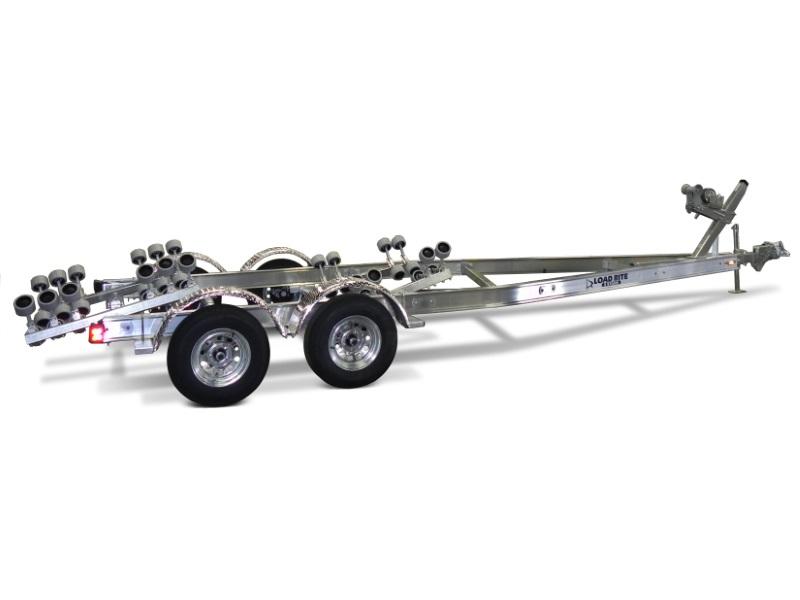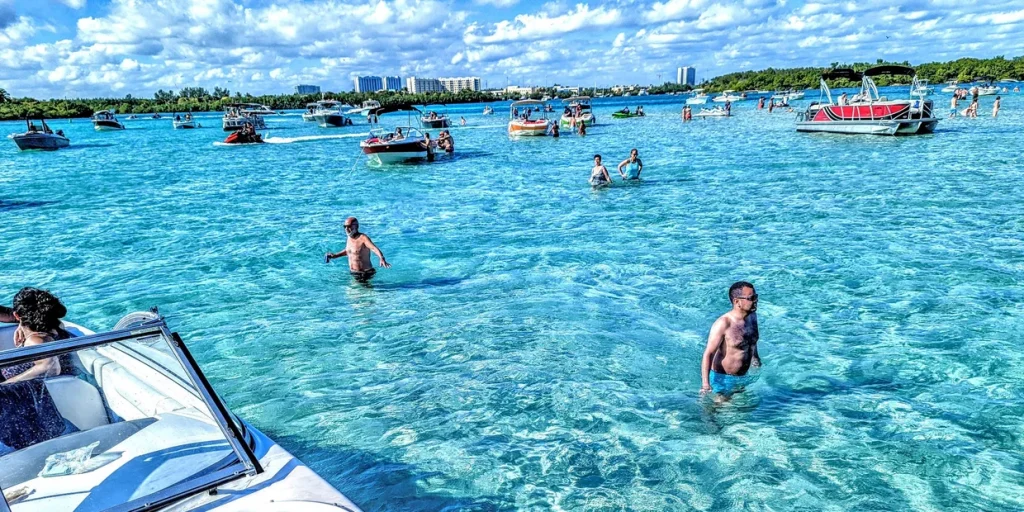A Passenger on a Small Boat Falls Overboard: How to Safely Pull Them Back Aboard
When a passenger falls overboard from a small boat, the situation can quickly become a serious emergency. Swift, precise action is crucial to ensure their safe return to the boat.

The first step is to reduce speed immediately and throw a Personal Flotation Device (PFD) to the person in the water, even if they are already wearing one. This provides an additional buoyancy aid and ensures their safety while rescuers prepare to help.
Next, navigate the boat carefully towards the person. Approach from downwind or into the current—whichever is stronger—to make the recovery safer and more manageable.
Turn off the engine before reaching out with a rescue device to avoid accidental injury or propeller hazards.

Use a reaching assist, like a boat hook or a throw line, to secure the person and help them hold on.
Once close, a reboarding device, such as a ladder or lifting sling, can be employed to help pull the individual back onto the boat.
Coordinating with other passengers and maintaining clear communication are essential throughout the process.
Ensuring the person is okay and administering any necessary first aid once they are back on board helps prevent further complications.

Key Takeaways
- Reduce speed and throw a PFD to the person in the water.
- Move the boat carefully towards the person and turn off the engine.
- Use a reboarding device for safe and efficient rescue.
Understanding the Risks and Causes of Overboard Incidents
Staying safe on a boat is important. Several factors can lead to someone falling overboard.
Common Causes:
- Sudden boat movements
- Slippery surfaces
- Inattention
- Improper weight distribution
Weather Conditions: Bad weather can increase the risk. High winds, waves, and rain make it harder to maintain balance. Currents also play a role, as strong ones can pull someone away quickly.
Alcohol: Drinking alcohol significantly raises the chance of falling overboard. It impairs judgment and balance.
Health Conditions: Some people may have health issues that make them more likely to fall. Conditions like dizziness, fainting, or fatigue can contribute.
Boating Safety Practices: To prevent incidents, always wear a Personal Flotation Device (PFD). Follow safety protocols and ensure everyone on board knows emergency procedures.
Preventative Measures and Safety Equipment
Proper preparation with the right equipment can prevent accidents and improve safety on the water. Here's a look at key preventative measures and safety tools for boating.
Life Jackets and Personal Flotation Devices
Personal Flotation Devices (PFDs) are essential for everyone on board. They can save lives by keeping individuals afloat if they fall into the water.
Life jackets should fit properly and be in good condition. Make sure each person wears a life jacket suited to their size and weight. There are different types, including:
- Type I: Off-shore life jacket for rough waters.
- Type II: Near-shore buoyant vest.
- Type III: Flotation aid for calm waters.
- Type IV: Throwable devices like ring buoys.
Regularly inspect life jackets for tears, broken buckles, or other damage.

Reboarding Devices and Aids
Reboarding devices are crucial for helping a person get back onto the boat. These include:
- Boarding ladders: Attach to the boat and extend into the water, allowing easy climbing.
- Reboarding slings: Used to hoist a person back up, useful for individuals who are tired or injured.
Keep these devices in accessible locations and make sure everyone on board knows how to use them. Practice drills can ensure everyone is familiar with the reboarding procedures.

Emergency Communication Tools
Effective communication tools are vital for handling emergencies. Some of these include:
- VHF radios: Used to call for help and communicate with other boats or the coastguard.
- Emergency position-indicating radio beacons (EPIRBs): Devices that send distress signals to search and rescue organizations.
- Whistles and air horns: Simple tools for grabbing attention in the immediate vicinity.
Test communication devices before leaving shore to ensure they are functioning correctly. Quick and clear communication can make a significant difference during an emergency.
Immediate Response to Man Overboard
When someone falls overboard, it's crucial to act quickly and keep the safety of the victim and crew in mind. Following proper steps ensures an effective and safe rescue.
Initiating a Man-Overboard Procedure
The first move is to shout "man overboard" and point to the location where the person fell. Alert everyone on board to the emergency so they can assist and stay clear of hazards.
Immediately reduce speed to minimize the risk of injury and avoid sharp turns that could capsize the boat.
Keeping the engine on but at low speed allows for quick maneuvers. Ensure the engine is turned off when close to the victim to prevent accidents.
Safely Approaching the Victim
Turn the boat around smoothly and pull alongside the victim. Approach from downwind or into the current, whichever offers better control. This method stabilizes the boat, preventing sudden movements that might pose a risk.
Keep the boat's center of gravity low and avoid crowding one side, which could lead to capsizing.
Constant communication helps synchronize actions and maintains the orientation of the boat towards the victim.

Effectively Using Rescue Equipment
Throw a buoyant heaving line, lifebuoy, life ring or any throwable type PFD if the victim isn't already wearing one. These tools are designed to keep the person afloat.
Use a reaching assist device to pull the victim closer, ensuring their head stays above water. Avoid grabbing the victim directly to prevent the risk of injury due to sudden movements.
Support the victim as they reboard, using proper rescue techniques.
It's important not to rush and to keep the victim calm and cooperative during the rescue process.
Proper use of equipment and maintaining a calm, methodical approach ensures the best chance for a safe recovery.
Recovering and Assisting the Overboard Passenger
When a passenger falls overboard, it is essential to act swiftly and follow correct rescue procedures to ensure their safe retrieval and health assessment.
Physical Assistance for Reboarding
Once the overboard passenger has been safely approached, the next step is to help them back onto the boat.
Slow the boat and come alongside them from downwind or into the current, which offers better control.
Step-by-Step Guide:
- Position the Boat Properly: Align the boat parallel to the victim.
- Stop the Engine: This prevents accidents from the propeller.
- Throw a Flotation Device: If close enough, throw a device with a rope attached to pull them closer.
Use a boarding ladder or a rescue sling to help lift the passenger out of the water as the boat’s higher position can make reboarding difficult.
Ensure weight is balanced evenly on the boat to prevent tipping.

Post-Rescue Health Assessment
After the victim is back on board, they may be experiencing hypothermia, shock, or other health conditions. It's crucial to conduct a quick health assessment.
Procedure:
- Check Breathing and Pulse: Ensure the victim is breathing and has a stable pulse.
- Remove Wet Clothing and Warm the Victim: Hypothermia can set in quickly, so dry and warm the victim.
- CPR if Required: If the victim is not breathing, begin CPR immediately.
- Seek Medical Attention: Even if the victim appears fine, contact medical services for a thorough health check.
Be alert for signs of drowning or delayed shock, and keep the victim comfortable and calm until professional help arrives.
Aftermath of a Passenger Overboard Incident
Addressing the aftermath of a passenger overboard incident involves ensuring proper reporting and learning from the experience to improve safety practices in future boating trips.
Incident Reporting and Legal Considerations
After rescuing the passenger, it's crucial to report the incident, especially if it involves serious injuries or fatalities.
The U.S. Coast Guard requires a report for accidents causing death, serious injury, or significant property damage.
Boat operators often need to detail the circumstances of the accident, including times, locations, and actions taken. They must also be prepared to explain how boating safety protocols were followed and what preventive measures were in place before the incident.
Proper reporting helps authorities understand the incident to prevent similar accidents in the future. It may also shield the boat operator from legal liabilities if they followed all safety regulations and responded appropriately.
Review and Improvement of Safety Practices
Following an overboard incident, reviewing safety protocols is essential.
This involves assessing whether all passengers had been briefed on safety measures and whether everyone was wearing proper personal flotation devices (PFDs).
Boat operators should examine their response to identify any gaps or delays.
They should ask themselves questions like, "Were throwable PFDs readily available?" and "Did everyone know their roles during the emergency?"
They should also check if the incident exposed vulnerabilities like potential carbon monoxide poisoning or propeller injury risks.
After identifying areas for improvement, operators should implement new practices or reinforce existing ones.
Regular safety drills, updated safety equipment, and fresh training sessions can enhance overall boating safety. Engaging with local boating classes or U.S. Coast Guard consultations can further strengthen these practices.
Frequently Asked Questions
When a passenger falls overboard from a small boat, it is crucial to act swiftly and follow specific steps to ensure their safe return. It's also important to follow safety precautions to prevent these incidents.
What immediate actions should be taken when a person falls overboard?
Immediately reduce your speed to prevent any accidents.
Toss the person a life jacket if they aren't already wearing one. Turn your boat around carefully, avoiding running over the person. Approach from downwind or into the current for better control.
What safety precautions should be in place to prevent passengers from falling overboard?
Ensure all passengers wear life jackets.
Maintain a proper lookout and avoid sudden maneuvers. Educate passengers on how to move safely around the boat. Consider installing non-slip surfaces to reduce the chance of slipping.
What are the steps to safely recover a person who has fallen overboard?
Reduce speed and throw a life-saving device. Turn the boat carefully and approach the person from downwind or into the current. Turn off the engine once you are close. Pull the person back over the stern of the boat.
What should you do first if you witness a boating accident involving property damage?
First, ensure everyone's safety and check for injuries. Then, exchange contact and insurance information with the other parties involved. Document the accident, including taking photos if possible.
When is a written boating accident report legally required?
A written report is legally required when there is a death, a disappearance, an injury needing medical treatment beyond first aid, or property damage exceeding a specific amount. Check local laws for the exact requirements.
Why is it important to have a pre-departure checklist before setting out on a boating trip?
A pre-departure checklist ensures that all safety equipment is onboard and functional. It includes checking the weather forecast. You also need to ensure the engine is running properly and make sure everyone knows the emergency procedures. This helps in preventing accidents and ensures a safer trip.
Charlie is Editor-in-Chief of Sea Magazine







